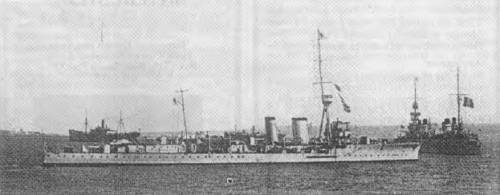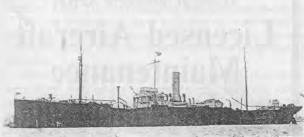- Author
- Rivett, Norman C
- Subjects
- WWI operations
- Tags
-
- RAN Ships
- None noted.
- Publication
- June 1990 edition of the Naval Historical Review (all rights reserved)
I read M.A. Head’s article Up With a Bang, NHR December 1989, with interest, including the quote from the fictitious Commander James Bond, RN.
For a number of logical reasons, I cannot accept the implication of a civilian fitter in the loss of HM Ships Natal and Vanguard in 1915 and 1917 respectively.
The fitter, if he existed, was guilty of nothing more than being a lucky survivor. I say ‘if’ because the story is suspiciously similar to that told by Captain Jack Broome, RN (Ret), whose career straddled both World Wars.
The story as narrated to Captain Broome has the advantage of fulfilling James Bond’s definition of enemy action whilst not implicating Dockyard personnel.
During 1917, the narrator served in the light cruiser HMS Castor (1915) as Signal Officer to the Commodore (F) commanding the five Destroyer Flotillas attached to the Grand Fleet.

The depot ship to these flotillas was HMS Sandhurst the largest of her type at that time, commanded by Captain English, a retired navigating specialist recalled to duty for war service. The Captain’s other accomplishments included a fluent knowledge of the German language.

Aboard Sandhurst were a number of supernumerary armourers and mates borne for the purpose of carrying out alterations to the magazines of certain ships consequent upon the loss of the Battle Cruisers Indefatigable (1909), Queen Mary (1912), and Invincible (1907) by explosion during the Battle of Jutland, 31st May 1916.
The Commodore’s Signal Officer was pacing the quarterdeck of Castor at Scapa Flow, on the evening of the 9th July 1917, when at 2300 precisely he witnessed HMS Vanguard (1908), a Dreadnought Battleship, blow up in two quite distinct portions. Although not professing to be a ballistics expert, he considered the explosion could have been caused by the simultaneous detonation of time bombs.
At daybreak the next morning a signal was received in CASTOR, the sense of which was:
SANDHURST TO CMDRE.F. AM SATISFIED I HAVE ARRESTED THE ENEMY AGENT RESPONSIBLE FOR BLOWING UP VANGUARD. WHEN MAY I COME AND SEE YOU.
During the interview which followed, it was revealed that on hearing the explosion, Captain English had promptly mustered the armourers and armourers’ mate on deck and had them brought to his cabin individually. To each armourer he very slowly spoke a short sentence in German, making the man repeat it to the best of his ability. Three of the armourers aroused the Captain’s suspicions, for despite assurances to the contrary they seemed to be familiar with the language. The Captain had then read the personal history sheets of the three suspects and found that one of them had worked onboard “BULWARK” (1902), which was sunk by explosion whilst at anchor in the Medway on the 26th November 1914, and onboard” NATAL” sunk by explosion at Cromarty on the 30th December 1915. He had also been onboard “VANGUARD” until 2000 on the day she exploded.
Later that morning the Commodore’s Signal Officer was ordered to detail one of the Duty Destroyers to take the suspect armourer under armed guard to Thurso, on the Scottish Mainland. From there he was transported to London by train, to be interviewed by the Head of Naval Intelligence, Admiral Sir Reginald H . (Blinker) Hall.
Some nine months later, when the Signal Officer was serving at the Admiralty, an opportunity occurred to ask Admiral Hall what had eventually happened to the suspect armourer. Not surprisingly he was politely but firmly told, to mind his own business.




